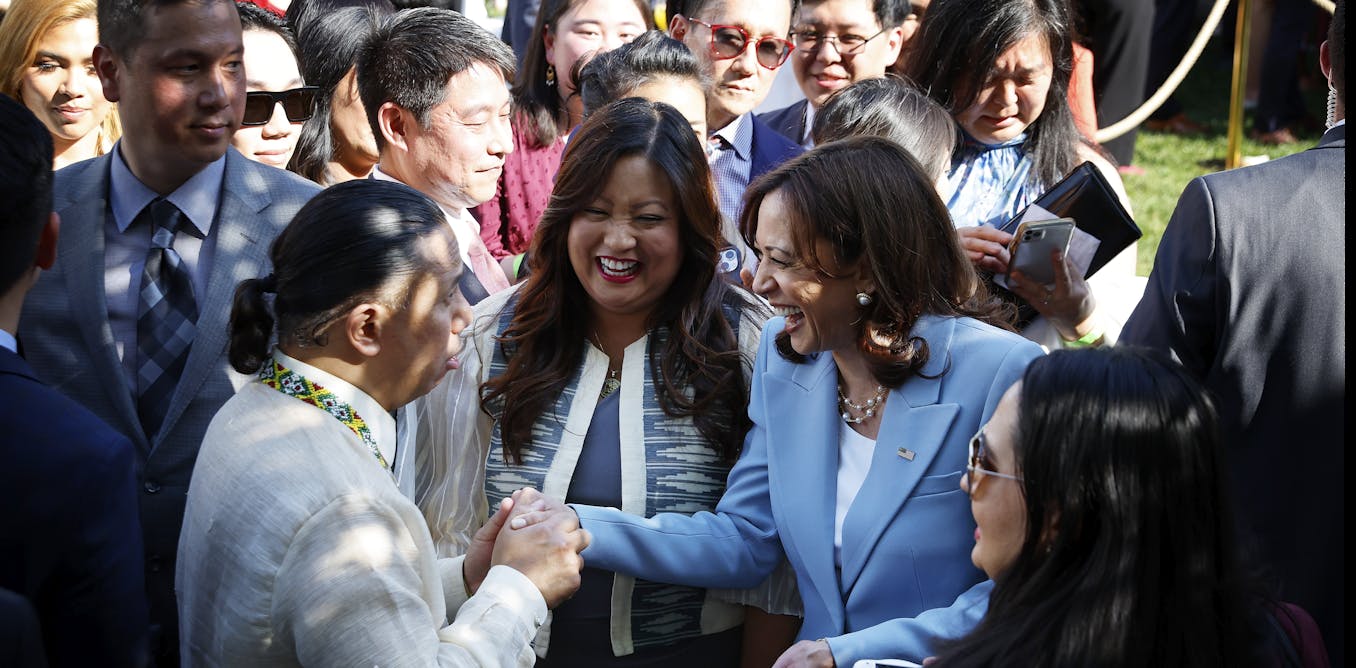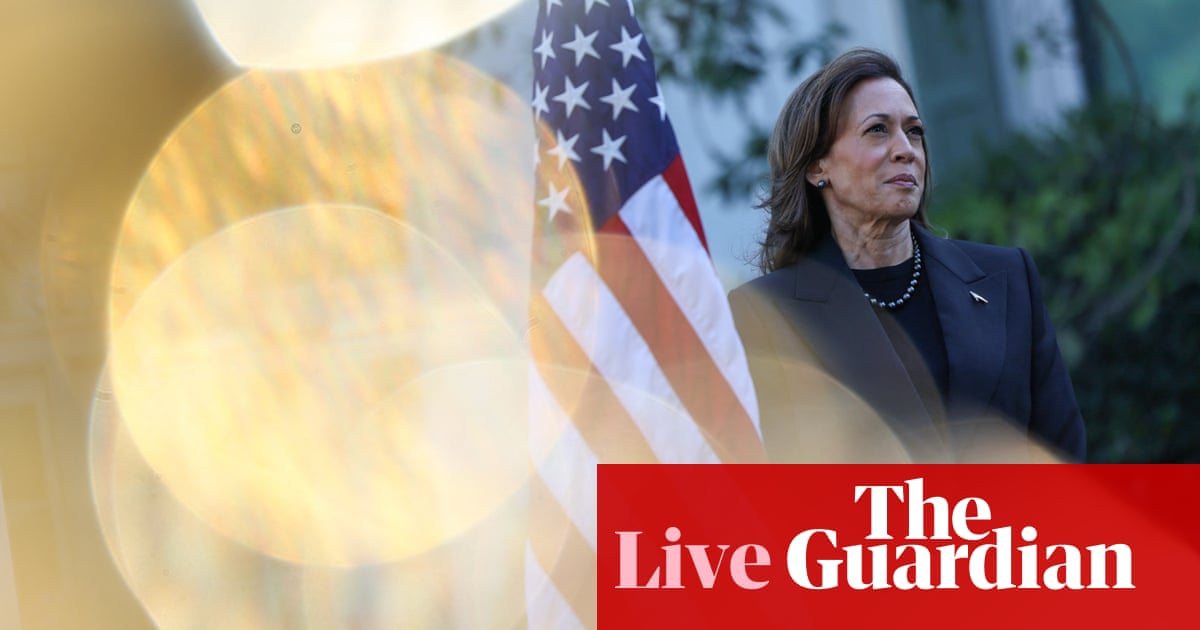White women voters have been the backbone of the GOP for decades – but polls indicate their support for the party may erode this November, thanks to younger white women who are moving left at breakneck speed.
In the weeks after the 2016 presidential election, after Donald Trump stunned the world by defeating Hillary Clinton, media outlets seized on white women to explain his shock win. Forty-seven per cent of white women voted for Trump, while 45% backed Clinton, according to an analysis of validated voter files by the Pew Research Center.
Trump’s success with white women highlighted a longstanding truth: this group votes for Republicans. Over the last 72 years, a plurality of white women have voted for the Democratic candidate in only two presidential elections – in 1964, when Lyndon Johnson won 44 states, and in 1996, when Bill Clinton ran in a three-way race. Trump’s lead with white women even grew in 2020, when 53% supported him. In contrast, 95% of Black women voted for Joe Biden in 2020, along with 61% of Hispanic women, Pew found.
But quite a bit has changed since 2020 – especially for women. The US supreme court overturned Roe v Wade in 2022, transforming abortion rights into a major election issue. Kamala Harris took over as the Democratic candidate from Joe Biden, becoming the first woman of color to secure a major-party nomination for president. All this raises the question: will 2024 be the year that white women, who make up almost 40% of the national electorate, finally join women of color in supporting the Democrats?
Well, not necessarily. But the gap very well may shrink.
There are signs that younger white women are peeling off from the GOP – a trend that is linked to a steady drift by all young women to the left.
“Young women of color and young white women, in my research, are pretty uniformly liberal and feminist,” said Melissa Deckman, CEO of the Public Religion Research Institute and author of the recent book The Politics of Gen Z: How the Youngest Voters Will Shape Our Democracy. “I think Harris’s selection as the nominee now – as opposed to Biden – has really further made them enthusiastic about voting. So I strongly suspect that young, white women voters are going to defy the longer-term trend of white women in general voting for Republicans.”
Young women are increasingly queer, increasingly secular and getting married later in life – all characteristics that tend to be linked with liberalism and support for the Democratic party. (People who identify as liberal are very likely to be Democrats, though the inverse is not necessarily true – not all Democrats identify as liberal.)
Between 2011 and 2024, liberal identification among white women rose by 6%, according to a Gallup analysis shared with the Guardian. Such identification also rose by 6% among Black women, but fell by 2% among Hispanic women.
Gen Z is the most diverse generation of Americans yet, but Gallup research suggests that doesn’t explain young women’s leftward drift. Between 2017 and 2024, 41% of white women between the ages of 18 and 29 identified as liberals – 2 percentage points more than their peers of color.
Young women are also unusually involved in politics. Women have long outvoted men, but in 2020, 60% of 18- to 29-year-old white women voted – more than any other group of youth voters, according to an analysis of AP VoteCast data by the Center for Information & Research on Civic Learning and Engagement. Fifty-five per cent voted for Biden.
Trump’s 2016 victory may have something to do with these trends. Raised by Democratic-leaning independents, Chloe Fowler said Trump’s election was a critical inflection point in her political evolution. She was a sophomore in high school when Trump won; the day after, somebody in her school hallway shouted gleefully: “Grab ’em by the pussy!”
“Things like that stick with us,” recalled Fowler, who is white. A few months later, her mom took her to the Women’s March in Omaha, Nebraska. “That was a very pivotal moment for me, honestly – doing a bunch of chants with her and wearing the pink cat ear hats.”
Fowler is now the vice-president of Nebraska Young Democrats. The 23-year-old has been phone-banking furiously in her home district – Nebraska’s second congressional district, which may end up deciding whether Trump or Harris becomes president.
after newsletter promotion
‘Why is this race so close?’
A September 19th News/SurveyMonkey poll recently found that white women narrowly prefer Harris to Trump, 42% to 40%, with a 1% margin of error. The remaining 8% can make or break the election, of course. The gender gap is larger: compared with white men, white women prefer Harris by a 6-point margin.
A majority of Black women support Harris, that poll found, as do pluralities of Hispanic and Asian American women.
Jane Junn, a political science professor at the University of Southern California, says what is often misunderstood as a “gender gap” between male and female voters is really a race gap. While women as a whole may end up voting for Harris – a September New York Times/Siena poll showed that 54% of women planned to vote for Harris, compared with 40% of men – white women, Junn predicted, will remain Republicans in 2024. “If all of a sudden, the white women were like: ‘Oh, my God, I’m burning my bra and my Barbie shoes and my long fingernails and all the plastic sprays I put into my body’ – we’re not seeing that,” Junn said. “Why is this race so close? It’s so close because these groups remain fairly consistent in their partisan loyalty.”
Polling from Galvanize Action, an organization that seeks to mobilize moderate women – especially in the critical “blue wall” states of Pennsylvania, Wisconsin and Michigan – has found the race in a dead heat among moderate white women, who are split 43% to 44% in favor of the former president. These women, who Galvanize Action defines as not ideologically entrenched as Democrats or Republicans, account for more than 5 million voters in those three states.
Trump has the edge when it comes to these women’s top issues of the economy and immigration, but the women polled by Galvanize Action trust Harris more on democracy and reproductive freedom.
“Even among women who say that economy or democracy is their No 1 issue, a good segment of those people also say: ‘I’m not going to vote for anyone that won’t protect abortion,’” said Jackie Payne, Galvanize Action’s executive director and founder.
Democrats are hoping that abortion rights-related ballot measures – which voters will decide on in the battlegrounds of Arizona, Nevada and Nebraska’s second congressional district – will spur turnout among their base. However, white women may in effect vote split-ticket, simultaneously voting for a pro-abortion rights measure and for Republicans. More than half of white women voted for Ohio’s 2023 abortion-related ballot measure – but more than 60% of white women supported Mike DeWine, the Republican governor who signed a six-week abortion ban into law, in 2022, just months after Roe fell.
“This is going to be all about turnout. This is going to be a very, very close election,” said Debbie Walsh, director of the Center for American Women and Politics at Rutgers. “The Democratic party counts on women. They count particularly on Black women to turn out. Will they be more energized?”

 German (DE)
German (DE)  English (US)
English (US)  Spanish (ES)
Spanish (ES)  French (FR)
French (FR)  Hindi (IN)
Hindi (IN)  Italian (IT)
Italian (IT)  Russian (RU)
Russian (RU)  3 hours ago
3 hours ago
























Comments